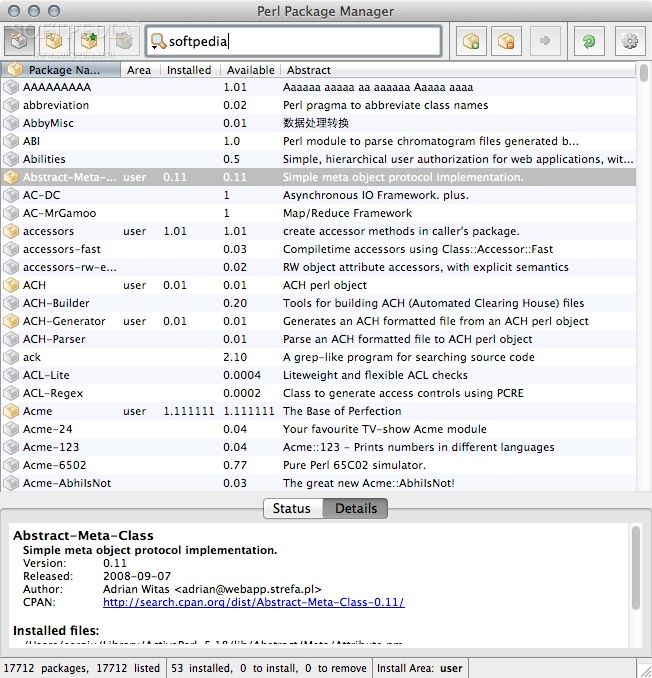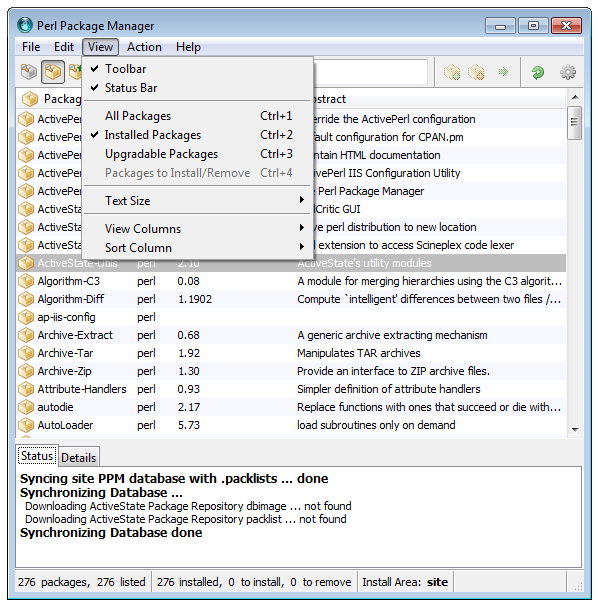

By identifying cases where no special handling will ever be required, the new compiler can emit faster code in most situations. There are also performance enhancements in arithmetic operations, which were slowed down by extra code for handling 64-bit values since Perl 5.8. Perl 5.24 has a lot of interesting new features, including improved unicode support, upgrading of post-fix dereferencing from experimental to production, and more aggressive handling of errors on closing the output file during an inplace edit. Features: Improved Performance and Security A fairing is something that makes it easier to use, smoother, more streamlined. A feature is something added to a program. bash_profile file, added during configuration.If you’re one of the millions of ActivePerl downloaders who want the support we provide in our Perl distribution, ActivePerl 5.24 is now available,with lots of new features and fairings. If necessary, remove any symbolic links, or updates to your. Removing ActivePerl will also remove perl modules manually installed using PPM. $ sudo /usr/local/ActivePerl-5.22/bin/ap-uninstall However, use the `uninstall` script that comes with ActivePerl Verify that you are pointing to the correct ActivePerl executables by entering `perl -version` and `ppm -version`Īpple does not provide a standard uninstallation tool or mechanism. $ ln -s /usr/local/ActivePerl-5.24/bin/ppm /Users//bin/ppm

$ ln -s /usr/local/ActivePerl-5.24/bin/perl /Users//bin/perl For example, you could add a bin subdirectory in your home directory to your PATH and create symbolic links: $ mkdir /Users//bin:$PATH
#ACTIVEPERL 5.22 FULL#
PATH=/usr/local/ActivePerl-5.22/site/bin:$PATHĪlternatively, you can create symbolic links to the binaries in any bin directory in your PATH to run the perl executables without entering the full path.

For example: PATH=/usr/local/ActivePerl-5.22/bin:$PATH bash_profile file in your home directory. To permanently add the directory to your PATH, add it to the. $ export PATH=/usr/local/ActivePerl-5.22/site/bin:$PATH For example: $ export PATH=/usr/local/ActivePerl-5.22/bin:$PATH To run the perl interpreter and the ppm package manager without having to enter the full path, you need to add /usr/local/ActivePerl-5.22/bin to your PATH environment variable. The macOS Installer package installs ActivePerl in /usr/local/ActivePerl-5.22. More information on the command line interface to Installer can beįound by entering man installer in Terminal. target / -verbose -dumplog > install.log 2>&1įor more information on the command line interface to Installer, enter man installer in Terminal. To do this, use the -verbose and -dumplog flags: sudo installer -pkg /Users//Downloads/ActivePerl-.pkg \

to send to ActiveState technical support).
#ACTIVEPERL 5.22 INSTALL#
Note: It is sometimes useful to create an install log file (e.g. Open Terminal and run Installer using the following syntax: $ sudo installer -pkg /Users//Downloads/ActivePerl-.pkg -target / Installer you can use to install ActivePerl from the command MacOS includes a non-interactive command line interface to Apple’s Installing with the Package command line tool The installer will ask for administrativeĪuthentication if the current user does not have administrative ( ActivePerl-.pkg) to start the installation. Double-click the ActivePerl installer package.Operating System: macOS 10.9 “Mavericks” or laterĪctivePerl is distributed on macOS as an installer package (.Before you beginīefore you start the installation, you need to ensure that your system meets the prerequisites, and that you do not have other Perl distributions that are going to conflict with ActivePerl. You can install the macOS package using the standard user interface, or by using the command line.


 0 kommentar(er)
0 kommentar(er)
